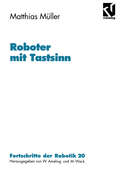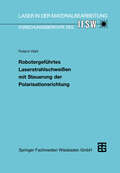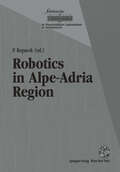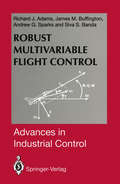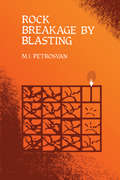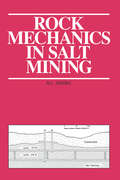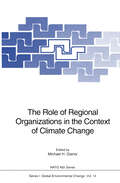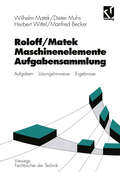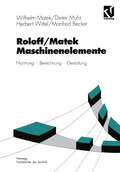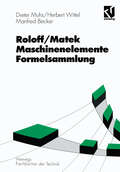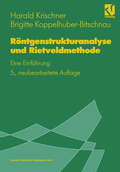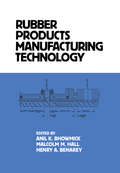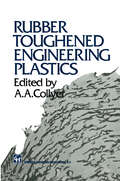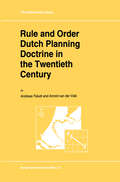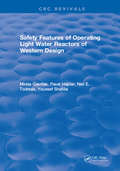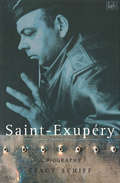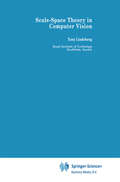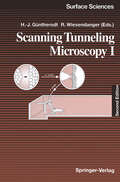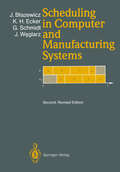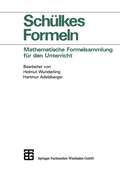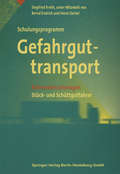- Table View
- List View
Robotergeführtes Laserstrahlschweißen mit Steuerung der Polarisationsrichtung (Laser in der Materialbearbeitung)
by Roland WahlDie vorliegende Dissertation entstand während meiner Tätigkeit als wissenschaftlicher Mitarbeiter am Institut für Strahlwerkzeuge (IFSW) der Universität Stuttgart. Ich danke Herrn Prof. Dr.-Ing. H. Hügel, dem Leiter des Instituts für Strahlwerkzeuge, für seinen fachlichen Rat und die großzügige Unterstützung, ohne die die Durchführung dieser Arbeit nicht möglich gewesen wäre. Ich danke ihm außerdem auch für viele Ratschläge, die meine persönliche Weiterentwicklung förderten. Herrn Prof. Dr.-Ing. H.-J. Warnecke danke ich für die Durchsicht meiner Arbeit und die Erstellung des Mitberichtes. Mein besonderer Dank gilt Herrn Dr. rer. nat. F. Dausinger, der den Fortschritt der Arbeit mit großem Interesse begleitete. Die mit ihm geführten fachlichen Diskussionen und seine wertvollen Anregungen waren wichtig für das Gelingen dieser Arbeit. Den Mitarbeitern und Studenten des IFSW danke ich für die kooperative Unterstützung und für die Beiträge zum redaktionellen Gelingen der Arbeit. Die kameradschaftliche Form der Zusammenarbeit mit meinen Kollegen trug wesentlich zum erfolgreichen Ablauf der Arbeit bei.
Robotics in Alpe-Adria Region: Proceedings of the 2nd International Workshop (RAA ’93), June 1993, Krems, Austria (Schriftenreihe der Wissenschaftlichen Landesakademie für Niederösterreich)
by Peter KopacekIndustrial robots as a kind of a mechatronic system were the objects for intensive scientific research in the last years. Kinematics and kinetics, advanced control algorithms, flexible robots, mobile robots, cooperation of robots were research topics. Meanwhile the industrial robot is more or less a tool on the shop floor level like NC- and CNC-machines, transportation and storage devices. The current research landscape on industrial robots can be divided in two directions. The first direction is the scientific one and topics like fuzzy control, applications of neuronal networks, application of methods of artificial intelligence for robot control, optimal path planning are currently headlines in this field. On the other hand the application oriented research goes in the direction to develop and create new low-cost concepts including industrial robots applicable in a commercially efficient way mainly in small and medium sized companies. The industry in most of the member countries of the Alpe-Adria Group are dominated by small and medium sized companies. Industrial robots together with the appropriate CIM-concepts are a very efficient tool for increasing the flexibility of such companies. At the first meeting in Portoroz (June 1992), a first overview on robotics research and applications in Alpe-Adria countries was given. First steps were done in the direction of a broader cooperation in science, development, production and level of education among these countries.
Robust Multivariable Flight Control (Advances in Industrial Control)
by Richard J. Adams James M. Buffington Andrew G. Sparks Siva S. BandaManual flight control system design for fighter aircraft is one of the most demanding problems in automatic control. Fighter aircraft dynamics generally have highly coupled uncertain and nonlinear dynamics. Multivariable control design techniques offer a solution to this problem. Robust Multivariable Flight Control provides the background, theory and examples for full envelope manual flight control system design. It gives a versatile framework for the application of advanced multivariable control theory to aircraft control problems. Two design case studies are presented for the manual flight control of lateral/directional axes of the VISTA-F-16 test vehicle and an F-18 trust vectoring system. They demonstrate the interplay between theory and the physical features of the systems.
Rock Breakage by Blasting
by M.I. PetrosyanDiscussing rock breakage by blasting, this text includes: results of complex investigations into the rock breakage mechanism and the patterns of crack formation during a blast; problems of modelling; and principal equations linking the model with prototype and similarity criteria.
Rock Breakage by Blasting
by M.I. PetrosyanDiscussing rock breakage by blasting, this text includes: results of complex investigations into the rock breakage mechanism and the patterns of crack formation during a blast; problems of modelling; and principal equations linking the model with prototype and similarity criteria.
Rock Mechanics in Salt Mining
by M.L. JeremicA study on rock mechanics in salt mining, this work includes coverage of the exploration and opening of salt mining, deformation and failure of the salt, strata mechanics and control for different mining systems, and stability analyses of the mine structures.
Rock Mechanics in Salt Mining
by M.L. JeremicA study on rock mechanics in salt mining, this work includes coverage of the exploration and opening of salt mining, deformation and failure of the salt, strata mechanics and control for different mining systems, and stability analyses of the mine structures.
The Role of Regional Organizations in the Context of Climate Change (Nato ASI Subseries I: #14)
by Michael H. GlantzThe past two decades have seen a remarkable broadening of interest in global warming from a research concern on the part of a limited number of scientists to a political problem on a worldwide scale. The nature of this transformation would itself be a fruitful study for a mixed team of social scientists and natural scientists. It would be valuable to assess the differing nature of the staging posts along this road: the First World Climate Conference in 1979, which was a meeting of scientists talking to scientists; the Villach Assessment of 1985, which was a meeting of scientists whose report was given attention by the policy advisers of a number of governments; the Second World Climate Conference of 1990, which consisted of a scientific meeting followed by a Ministerial Meeting; and the United Nations Framework Convention on Climate Change of 1992 signed by 158 countries at the UN Conference on Environment and Development in June 1992. The present publication is a welcome contribution of the followup to UNCED. By focusing on a specific problem, it avoids the pitfall of undue generalization and provides the basis for fruitful discussion between natural scientists, social scientists, and policymakers. To choose as the area of concentration a particular scale also helped to produce meaningful discussion likely to lead to action.
Roloff / Matek Maschinenelemente: Aufgabensammlung: Aufgaben, Lösungshinweise, Ergebnisse (Viewegs Fachbücher der Technik)
by Wilhelm Matek Dieter Muhs Herbert Wittel Manfred BeckerMit gezielten Verständnisfragen, über 400 Aufgaben, Lösungshinweisen und Ergebnissen schafft dieses Aufgabenbuch Sicherheit in der Vorbereitung vor Klausuren. Durch die Abstimmung auf das Lehrbuch ist der Lernfortschritt systematisch steuerbar.
Roloff/Matek Maschinenelemente: Normung Berechnung Gestaltung (Viewegs Fachbücher der Technik)
by Wilhelm Matek Dieter Muhs Herbert Wittel Manfred BeckerDiese umfassende normgerechte Darstellung von Maschinenelementen für den Unterricht ist in ihrer Art bislang unübertroffen. Durch fortwährende Überarbeitung sind alle Bestandteile des Lehrsystems ständig auf dem neuesten Stand und in sich stimmig. Die ausführliche Herleitung von Berechnungsformeln macht die Zusammenarbeit und Hintergründe transparent. Schnell anwendbare Berechnungsformeln ermöglichen die sofortige Dimensionierung von Bauteilen.
Roloff/Matek Maschinenelemente Formelsammlung (Viewegs Fachbücher der Technik)
by Dieter Muhs Herbert Wittel Manfred BeckerAls Ergänzung zu den bewährten Bestandteilen des Lehrsystems schließt die Formelsammlung eine Lücke. In kompakter Form trägt sie die wichtigsten Formeln des Lehrbuchs übersichtlich zusammen. Mit eindeutigem Bezug und klarer Zuordnung zu den erläuternden Stellen des Lehrbuchs ist ein effektives Arbeiten möglich.
Röntgenstrukturanalyse und Rietveldmethode: Eine Einführung
by Harald Krischner Brigitte Koppelhuber-BitschnauPulveraufnahmen in der Röntgenfeinstrukturanalyse gestatten zunächst nur eine rasche Identifizierung von Substanzen, Quantitative Phasenanalysen, Teilchengrößenbestimmungen und Aussagen über den Kristallisationszustand. Heute können allerdings auch Kristallstrukturbestimmungen aus Pulveraufnahmen mittels Profilanalysen nach der Rietveldmethode durchgeführt werden. Das Buch vermittelt die Grundlagen der Röntgenstrukturanalyse in sehr kurzer und klarer Form. Das Hauptgewicht wird auf die praktische Durchführung und Auswertung von Pulveruntersuchungen unter Einbeziehung der Rietveldmethode gelegt. Mit geringsten mathematischen Mitteln wird ein Überblick über das gesamte Gebiet der Röntgenfeinstrukturanalyse gegeben und der Leser wird in die Lage versetzt, Röntgenpulveraufnahmen selbständig durchzuführen und auszuwerten.
Rubber Products Manufacturing Technology
by AnilK. BhowmickProvides authoritative coverage of compounding, mixing, calendering, extrusion, vulcanization, rubber bonding, computer-aided design and manufacturing, automation and control using microprocessors, just-in-time technology and rubber plant waste disposal.
Rubber Products Manufacturing Technology
by ANIL K. BHOWMICK, MALCOLM M. HALL AND HENRY A. BENAREYProvides authoritative coverage of compounding, mixing, calendering, extrusion, vulcanization, rubber bonding, computer-aided design and manufacturing, automation and control using microprocessors, just-in-time technology and rubber plant waste disposal.
Rubber Toughened Engineering Plastics
by A. A. CollyerRubber Toughened Engineering Plastics covers the main physical principles involved in optimum toughening in high temperature engineering plastics and speciality plastics and describes the synthetic strategies used to obtain satisfactorily toughened grades in these materials by control of microstructure. This book will act as a focus for current thought on the principles of rubber toughening and the methods employed for the rubber toughening of major engineering and speciality plastics.
Rule and Order Dutch Planning Doctrine in the Twentieth Century (GeoJournal Library #28)
by A. Faludi A.J. van der ValkThis book is about an art in which the Netherlands excels: strategic planning. Foreign observers will need little convincing of the merits of Dutch planning. They will want to know whether routine explanations (small country, industrious, disciplined people hardened by the perennial fight against the sea) hold any water, and they will want to know where to look for the bag of tricks of Dutch planners. Dutch readers need to be convinced first that planning in the Netherlands is indeed effective before contemplating how this has come about. Our message for both is that, to the extent that Dutch planners do live in what others are inclined to see as a planners' paradise, it is a paradise carefully constructed and maintained by the planners themselves. This smacks of Bernard Shaw describing a profession as a conspiracy against laity. However, all knowledge and all technologies are 'socially constructed', meaning that they are the products of people or groups pursuing often conflicting aims and coming to arrangements about what is to pass as 'true' and 'good'. So this takes away the odium of Dutch planners having their own agenda. Positioning ourselves We are in the business of interpreting Dutch planning, and at the same time committed to improving it. This makes us part of the situation which we describe. This situation is characterized by the existence of two divergent traditions, urban design and the social-science discipline called 'planologie'.
Safety Features of Operating Light Water Reactors of Western Design
by M. GavrilasThis text arose from a study originally undertaken for the Department of Energy to characterize the principal safety features of light water reactors of western design. This text should be of use to professional engineers interested in safety assessment of operating light water reactors, students interested in the principal safety features of LWRs, and others interested in tracing the design evolution of light water reactors. However, while ambitious in its scope, this text should not be viewed as presenting the levels of reactor safety of the various families of western reactor designs.
Safety Features of Operating Light Water Reactors of Western Design
by M. GavrilasThis text arose from a study originally undertaken for the Department of Energy to characterize the principal safety features of light water reactors of western design. This text should be of use to professional engineers interested in safety assessment of operating light water reactors, students interested in the principal safety features of LWRs, and others interested in tracing the design evolution of light water reactors. However, while ambitious in its scope, this text should not be viewed as presenting the levels of reactor safety of the various families of western reactor designs.
Saint-Exupery: A Biography
by Stacy SchiffA fascinating account of the life of one of the century's great eccentrics - the brilliant Antoine de Saint-Exupery. Born in 1900 of impoverished aristocracy, he swiftly developed a mania for aviation, despite his chaotic mind and total technological incompetence. He flew reconnaissance missions in the War and wrote some strange and wonderful books, including the classic children's story THE LITTLE PRINCE, between theatrically executed airplane crashed. He died in the air in 1944, and his brief life instantly acquired mythical status. 'Every facet of Saint-Exupery's short and dramatic life is covered in this fascinating biography. This is Stacy Schiff's first book, but she writes with all the skill, assurance and mastery of an old literary hand. If there was such a thing as a prize for a first biography, I would nominate this book. ' Frank McLynn, SUNDAY TELEGRAPH.
Scale-Space Theory in Computer Vision (The Springer International Series in Engineering and Computer Science #256)
by Tony LindebergThe problem of scale pervades both the natural sciences and the vi sual arts. The earliest scientific discussions concentrate on visual per ception (much like today!) and occur in Euclid's (c. 300 B. C. ) Optics and Lucretius' (c. 100-55 B. C. ) On the Nature of the Universe. A very clear account in the spirit of modern "scale-space theory" is presented by Boscovitz (in 1758), with wide ranging applications to mathemat ics, physics and geography. Early applications occur in the cartographic problem of "generalization", the central idea being that a map in order to be useful has to be a "generalized" (coarse grained) representation of the actual terrain (Miller and Voskuil 1964). Broadening the scope asks for progressive summarizing. Very much the same problem occurs in the (realistic) artistic rendering of scenes. Artistic generalization has been analyzed in surprising detail by John Ruskin (in his Modern Painters), who even describes some of the more intricate generic "scale-space sin gularities" in detail: Where the ancients considered only the merging of blobs under blurring, Ruskin discusses the case where a blob splits off another one when the resolution is decreased, a case that has given rise to confusion even in the modern literature.
Scanning Tunneling Microscopy I: General Principles and Applications to Clean and Absorbate-Covered Surfaces (Springer Series in Surface Sciences #20)
by D. Anselmetti R. J. Behm P.J.M. van Bentum S. Chiang Hans-Joachim Güntherodt R. J. Hamers H. J. Hug H. Van Kempen Y. Kuk H. Rohrer Roland Wiesendanger J. WintterlinSince the first edition of "Scanning 'funneling Microscopy I" has been pub lished, considerable progress has been made in the application of STM to the various classes of materials treated in this volume, most notably in the field of adsorbates and molecular systems. An update of the most recent develop ments will be given in an additional Chapter 9. The editors would like to thank all the contributors who have supplied up dating material, and those who have provided us with suggestions for further improvements. We also thank Springer-Verlag for the decision to publish this second edition in paperback, thereby making this book affordable for an even wider circle of readers. Hamburg, July 1994 R. Wiesendanger Preface to the First Edition Since its invention in 1981 by G. Binnig, H. Rohrer and coworkers at the IBM Zurich Research Laboratory, scanning tunneling microscopy (STM) has devel oped into an invaluable surface analytical technique allowing the investigation of real-space surface structures at the atomic level. The conceptual simplicity of the STM technique is startling: bringing a sharp needle to within a few Angstroms of the surface of a conducting sample and using the tunneling cur rent, which flows on application of a bias voltage, to sense the atomic and elec tronic surface structure with atomic resolution! Prior to 1981 considerable scepticism existed as to the practicability of this approach.
Scheduling in Computer and Manufacturing Systems
by Jacek Blazewicz Klaus H. Ecker Günter Schmidt Jan WeglarzA theoretical and application-oriented analysis of deterministic scheduling problems arising in computer and manufacturing environments. The important classical results are surveyed with particular attention paid to single-processor scheduling, along with general models such as resource-constrained scheduling, flexible flow shops, dynamic job shops, and special flexible manufacturing systems. Polynomial and exponential-time optimization algorithms as well as approximation and heuristic ones are presented using a Pascal-like notation, before being discussed in the light of particular problems. Basic concepts from scheduling theory and related fields are described to assist less advanced readers.
Schulungsprogramm Gefahrguttransport: Referentenunterlagen Stück- und Schüttgutfahrer
by Dr. Ing. KrethDas Schulungsprogramm Gefahrgut-Transport des Springer-Verlags zeichnet sich durch die besondere didaktische Darstellung aus. Es ist damit das erste Programm, das den Bedürfnissen der Zielgruppe Kraftfahrer durch die Formulierung der schwierigen Materie entgegenkommt. Die Ausbildungsunterlagen (= Folien) sind graphisch übersichtlich gestaltet und erlauben in der beschränkten Zeit des Kurses die wesentlichen Inhalte zur Erlangung der Sachkunde zu vermitteln. Diese Inhalte sind im Kursteilnehmerbuch als "Merksätze" zusammengefaßt. Die Lerninhalte entsprechen dem Rahmenlehrplan für die Gefahrgutfahrerschulung des DIHT. Der Autor und seine Mitarbeiter bilden seit vielen Jahren Fahrer aus.
